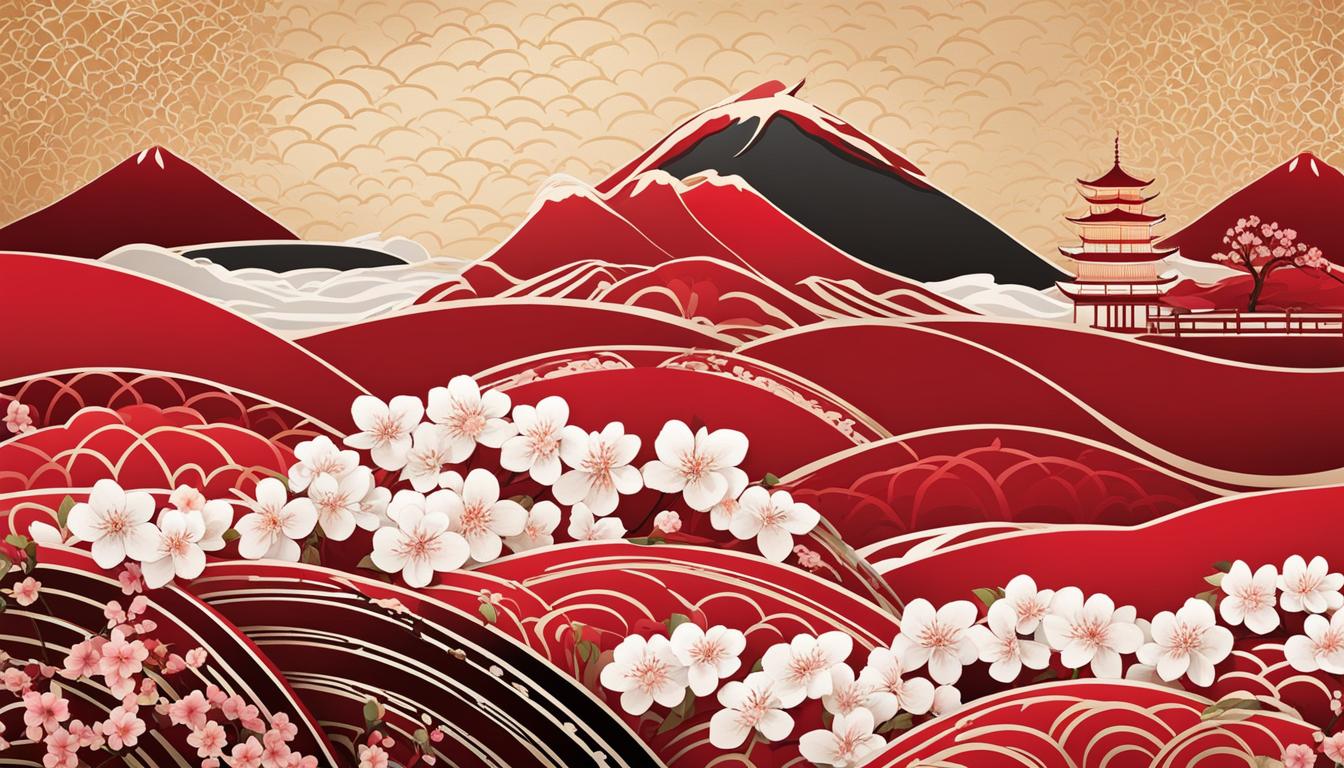Welcome to an exploration of the fascinating meaning and cultural significance of the word “maru” in the Japanese language. In this article, we will delve into the various meanings of “maru,” its grammar and pronunciation, the kanji characters it is associated with, and its contextual and cultural usage in Japan.
The word “maru” holds multiple meanings in Japanese, depending on the context in which it is used. At its most basic, “maru” refers to a “circle” or “round” shape, often represented by the kanji characters 丸 or 円, or in hiragana as まる.
In addition to its geometric meaning, “maru” is also associated with correctness. It is commonly used as a symbol for “correct” in Japanese culture, contrasting with the symbol “batsu” (✕), which represents “incorrect.”
The word “maru” is versatile and can also express something that is not known or speak in a generic sense. It is commonly used to censor words and has traditionally been used as a suffix for Japanese boat names.
The cultural significance of the “maru” symbol extends beyond its grammar and meaning. It is widely recognized and respected in Japan as a symbol of unity, harmony, and completeness. The circular shape of the symbol reflects a harmonious and balanced existence.
In ship names, the “maru” suffix has a long-standing tradition, dating back to the 16th century. It is applied to merchant ships and represents a safe and complete journey. This ship-naming convention is still observed today in commercial and private ships, solidifying the cultural importance of the “maru” symbol in Japan.
The “maru” symbol is also used in Japanese censorship to obscure or hide inappropriate or offensive words while still conveying the intended meaning. This form of censorship is applied in various media to maintain decency and respect for social norms.
So join us on this cultural journey as we explore the rich meaning and cultural significance of the “maru” symbol in Japanese language and society.
Maru Symbol in Japanese Culture
In Japanese culture, the “maru” symbol holds significant meaning. As mentioned earlier, “maru” represents correctness and is often associated with being “perfect” or “complete.” It is a symbol of unity and harmony. The use of the “maru” symbol in Japanese kanji characters and as a suffix for boat names reflects the cultural significance of this symbol. The circular shape of the symbol is seen as a representation of a harmonious and balanced existence. The symbol is also used in divination and represents perfection or completeness, acting as a protective circle around a ship or any enclosed space. In Japanese culture, the “maru” symbol is widely recognized and respected.
In Japanese culture, the “maru” symbol is widely recognized and respected. It holds various meanings, including representing correctness, perfection, unity, and balance. The circular shape of the symbol embodies a harmonious and complete existence. It is commonly used in kanji characters and serves as a suffix for boat names. The “maru” symbol is also associated with divination, where it symbolizes perfection and acts as a protective circle. Its cultural significance reflects the values and beliefs of the Japanese people.
Maru Symbol Origin and Historical Significance
The origin of the “maru” symbol can be traced back to ancient Japan. Several theories exist regarding its meaning and significance. One theory suggests that ships were considered floating castles, and the “maru” symbol represented the defensive circles or fortifications that protected the castle. Another theory suggests that the suffix “-maru” was applied to beloved objects, and sailors applied this suffix to their ships to symbolize their love and attachment to them. It is also believed that the “maru” symbol represents a small world of its own, signifying completeness and perfection. The myth of Hakudo Maru, a celestial being who taught humans how to build ships, is another explanation for the use of the “maru” symbol on ships. Over time, the use of the “maru” symbol on non-warships became a naming convention representing a safe and complete journey, returning to the home port unhurt.
The historical significance of the “maru” symbol in Japanese culture cannot be understated. Its origins and associations with ships, protection, love, and completeness have shaped its use and meaning over the centuries. Understanding the historical context behind the “maru” symbol provides valuable insights into the cultural significance it holds and how it has become a recognizable and respected symbol in Japanese society.
Maru Symbol in Ship Names
In Japanese ship names, the word “maru” is often attached as a suffix. This tradition dates back to the 16th century when the Nippon Maru, the flagship of daimyō Toyotomi Hideyoshi’s fleet, became the first known ship to adopt this naming convention. The inclusion of “maru” in ship names holds deep cultural significance and symbolizes unity and completeness.
The use of “maru” in ship names reflects the journey of the vessel from the home port and back, signifying a safe and complete voyage. While merchant ships commonly carry the “maru” suffix, warships are often named after mountains, islands, weather phenomena, or animals. This ship-naming convention is still prevalent today in both commercial and private ships, preserving the cultural heritage associated with the “maru” symbol.
Below is a table showcasing a few examples of ship names that follow the maru ship naming convention.
| Ship Name | Type |
|---|---|
| Nippon Maru | Merchant Ship |
| Yamato Maru | Merchant Ship |
| Hakusan Maru | Merchant Ship |
| Amagi Maru | Warship |

Maru Symbol in Japanese Censorship
The “maru” symbol plays a significant role in Japanese censorship. When it comes to censoring words that are deemed inappropriate or offensive, specific characters are replaced with the “maru” symbol. This practice is commonly observed in censoring words related to body parts or explicit content. The objective of using the “maru” symbol in censorship is to obscure or conceal the original word while still enabling readers to grasp the intended meaning. Such censorship methods are commonly employed in books, magazines, and online content to uphold a sense of decency and uphold social norms.
To illustrate the use of the “maru” symbol in Japanese censorship, consider the following example:
| Original Word | Censored Word |
|---|---|
| 乳首 (nipple) | 乳〇 (maru symbol substituted) |
| 性器 (genitals) | 性〇 (maru symbol substituted) |
In the table above, words related to body parts have been censored using the “maru” symbol. This practice allows for the concealment of explicit content while still preserving the overall understanding of the text.
Maru Symbol in Other Cultural References
Aside from its significance in ship names and censorship, the “maru” symbol has other cultural references in Japan. In traditional Japanese boat names, the “maru” suffix is used to honor the boat’s name and heritage. For example, the historically relevant boat “安宅丸” (atakemaru) from the Edo era carries the “maru” symbol.
Furthermore, the phrase “maru maru” or “〇〇” is used in Japanese dramas and literature to represent something that is unknown or not explicitly mentioned. The symbol is also present in popular literary magazines, where it has been used to censor words, combining two words with a single “maru” symbol.
To showcase the cultural significance of the “maru” symbol in boat names, literature, and Japanese dramas, let’s explore the examples below:
| Examples | Description |
|---|---|
| Boat Names | The “maru” suffix is widely used to convey respect for the boat’s name and heritage. For instance, the historically significant boat “安宅丸” (atakemaru) from the Edo era carries the “maru” symbol. |
| Japanese Dramas | The phrase “maru maru” or “〇〇” is often used in Japanese dramas to represent unknown or unspecified things. It adds an air of mystery or suggests that certain details are intentionally left out for the audience to interpret. |
| Literary Magazines | The “maru” symbol is present in popular literary magazines where it serves as a way to censor words. It combines two words using a single “maru” symbol to evoke curiosity and imagination in the readers. |
Maru Symbol Comparison and Conclusion
The phrase marude in Japanese serves a dual purpose: it can be used to compare something to be “just like” or “similar to” something else, or it can mean “not at all” depending on the context. This phrase is commonly employed to signify the degree of similarity or dissimilarity between two things.
In Japanese culture, the maru symbol is often contrasted with the batsu symbol, representing “incorrect” or “wrong.” While the maru symbol is associated with correctness, perfection, and harmony, the batsu symbol signifies errors or mistakes. These symbols stand in binary opposition, epitomizing correctness versus incorrectness and completeness versus incompleteness.
The maru symbol carries immense cultural and historical significance in Japanese society, reflecting the values of unity, balance, and perfection. The concept of marude encompasses the idea of comparison, emphasizing the similarities or differences between entities. It exemplifies the importance of correctness, authenticity, and completeness, while the comparison with the batsu symbol underscores the importance of avoiding errors and mistakes.
Overall, the maru symbol serves not only as a visual representation of meaning but also as a cultural identifier. Its presence in Japanese culture is deeply rooted, encompassing its use in ship names, censorship, divination, and everyday expressions. Understanding the maru symbol and its association with concepts of correctness and unity provides insight into the symbolism and values that underpin Japanese society.

